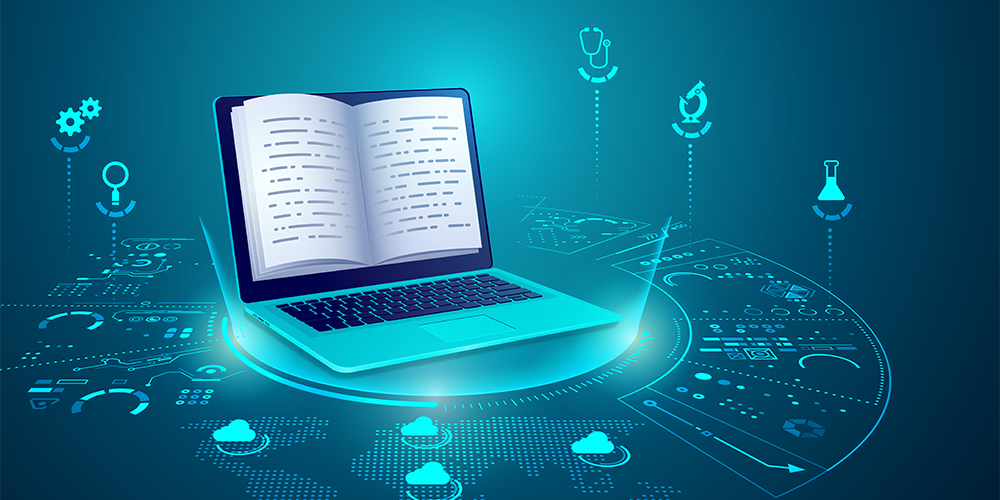Ingenious Methods for Enhancing Modern Technology Education in Today's Learning Atmospheres
The evolving landscape of innovation education and learning necessitates a reevaluation of standard instructional methods to much better gear up trainees for the complexities of the modern world. Ingenious approaches, such as hands-on knowing experiences and collaborative project-based initiatives, play a vital function in linking academic principles with sensible applications. Furthermore, the integration of on the internet resources and gamification can boost involvement and inspiration amongst students. As we discover these methodologies, it becomes vital to think about how personalized learning can further enrich the instructional experience and foster a much deeper link in between trainees and innovation. What might this imply for the future of education and learning?
Hands-On Knowing Experiences
Hands-on knowing experiences work as a keystone in technology education, efficiently connecting the space in between theoretical understanding and useful application. These experiential activities enable pupils to engage straight with tools, software program, and innovation, promoting a much deeper understanding of principles that are frequently abstract in conventional classroom setups.
By incorporating hands-on knowing, instructors can assist in a setting where students can experiment, introduce, and troubleshoot. This approach not just cultivates technological skills however likewise enhances analytical capacities, as students are motivated to confront real-world obstacles. Hands-on experiences often lead to increased trainee inspiration and engagement, as learners see the prompt importance of their studies to practical scenarios.
Additionally, such experiences can take different kinds, consisting of laboratory experiments, simulations, and interactive projects, every one of which provide to various understanding designs. The integration of hands-on learning in modern technology education and learning likewise promotes retention of details, as trainees are most likely to remember ideas they have actually proactively collaborated with as opposed to passively observed. On the whole, hands-on experiences are necessary in preparing students for the complexities of the contemporary technical landscape, furnishing them with the skills and self-confidence required to succeed in their future occupations.
Joint Project-Based Learning
Joint project-based discovering equips students to work with each other in teams to resolve complex, real-world issues, cultivating vital abilities for the modern labor force. This method encourages energetic engagement, essential reasoning, and creative thinking, as students negotiate roles, share obligations, and jointly devise options. By submersing themselves in projects that reflect authentic difficulties, learners create a deeper understanding of the subject issue while honing their ability to communicate and team up properly.
In innovation education and learning, joint project-based understanding can manifest with interdisciplinary jobs that incorporate components of layout, engineering, and coding. Trainees may team up to create a mobile application or layout a model that attends to a societal concern, needing them to incorporate various technological concepts and devices. This experiential understanding not just improves technological effectiveness but additionally cultivates analytical abilities and adaptability.
Additionally, such joint undertakings advertise a sense of community amongst students, promoting social relationships and a shared dedication to their job results. As they navigate the intricacies of synergy, students learn to value varied viewpoints and utilize each other's staminas, preparing them for future specialist atmospheres where collaboration is important. Ultimately, joint project-based learning is a cornerstone of efficient technology education and learning.
Combination of Online Resources

The assimilation of on the internet sources assists in accessibility to updated info and sector requirements, which is important in a swiftly advancing technological landscape. By leveraging systems such as MOOCs (Massive Open Online Courses) and specialized training sites, instructors can supplement traditional curricula with real-world applications, enabling students to involve with current fads and techniques.

Eventually, Insurance the thoughtful assimilation of on-line resources in modern technology education and learning cultivates a much more vibrant, appealing, and appropriate knowing experience, gearing up students with the abilities and understanding essential to grow in an increasingly digital globe.
Gamification Methods in Education
The consolidation of gamification techniques in education and learning represents a powerful method to better involve trainees and enhance their knowing experiences. By integrating game-like components such as factors, badges, and leaderboards into the curriculum, teachers can promote motivation and promote a sense of competition among learners. These methods urge participation and persistence, particularly in subjects that might otherwise show up intimidating.
Gamification can take different forms, consisting of interactive tests, joint projects, and immersive simulations, which allow pupils to use their knowledge in functional contexts. This interactive strategy not just makes discovering pleasurable yet additionally reinforces essential ideas with repetition and instant comments. As students development, they can track their achievements, promoting a development mindset and a sense of achievement.
Furthermore, gamification assists in separated instruction by accommodating varied understanding styles and speeds. Pupils are encouraged to take ownership of their discovering journey, permitting a more individualized educational experience. In a significantly electronic world, making use of gamification strategies can connect the gap in between conventional education and contemporary technological innovations, eventually preparing pupils for future difficulties.
Personalized Understanding Approaches
Customized discovering techniques are increasingly recognized as vital for addressing the varied requirements and choices of pupils in today's academic landscape. These methods equip students by customizing academic experiences to individual passions, staminas, and learning speeds, therefore improving involvement and retention.
In modern technology education and learning, personalized learning can take numerous kinds, including adaptive understanding modern technologies, customized educational programs, and project-based learning tailored to trainee passions. Systems that use man-made intelligence can evaluate a trainee's performance information to suggest details sources or tasks that line up with their discovering design.
Furthermore, customized knowing urges student firm, enabling learners to establish objectives and select paths that resonate with their goals (AI Tools). This autonomy promotes a much deeper connection to the material, inevitably leading to improved outcomes
Educators play an essential role in this procedure, employing formative assessments to check development and adjust direction appropriately. Digital profiles and collective tools can likewise promote customized learning, enabling trainees to mirror on their trips and showcase their success.
Verdict
In final thought, improving innovation education in modern understanding atmospheres necessitates the execution of innovative methods that focus on hands-on discovering, collaborative tasks, and the assimilation of online resources. Gamification methods serve to boost engagement and inspiration, while personalized learning strategies accommodate specific toughness and foster trainee agency. Jointly, these methods create a vibrant academic experience that prepares students for real-world difficulties and cultivates necessary skills for future success in a rapidly progressing technological landscape.
As we explore these approaches, it comes to be important to consider how tailored learning can further enrich the instructional experience and cultivate a deeper link between students and modern technology. The combination of hands-on knowing in innovation education and learning likewise promotes retention of information, as trainees are extra most likely to keep in mind concepts they have actively functioned with instead than passively observed.The consolidation of gamification strategies in education and learning stands for a powerful approach to better involve pupils and boost their knowing experiences. Trainees are empowered to take ownership of their learning trip, permitting for an extra tailored academic experience.In verdict, improving innovation education and learning in contemporary learning atmospheres demands the execution of cutting-edge strategies that focus on hands-on learning, collaborative tasks, and the integration of on the internet sources.
Comments on “Discover the most effective Choices for Grants to Support Your Financial Goals”